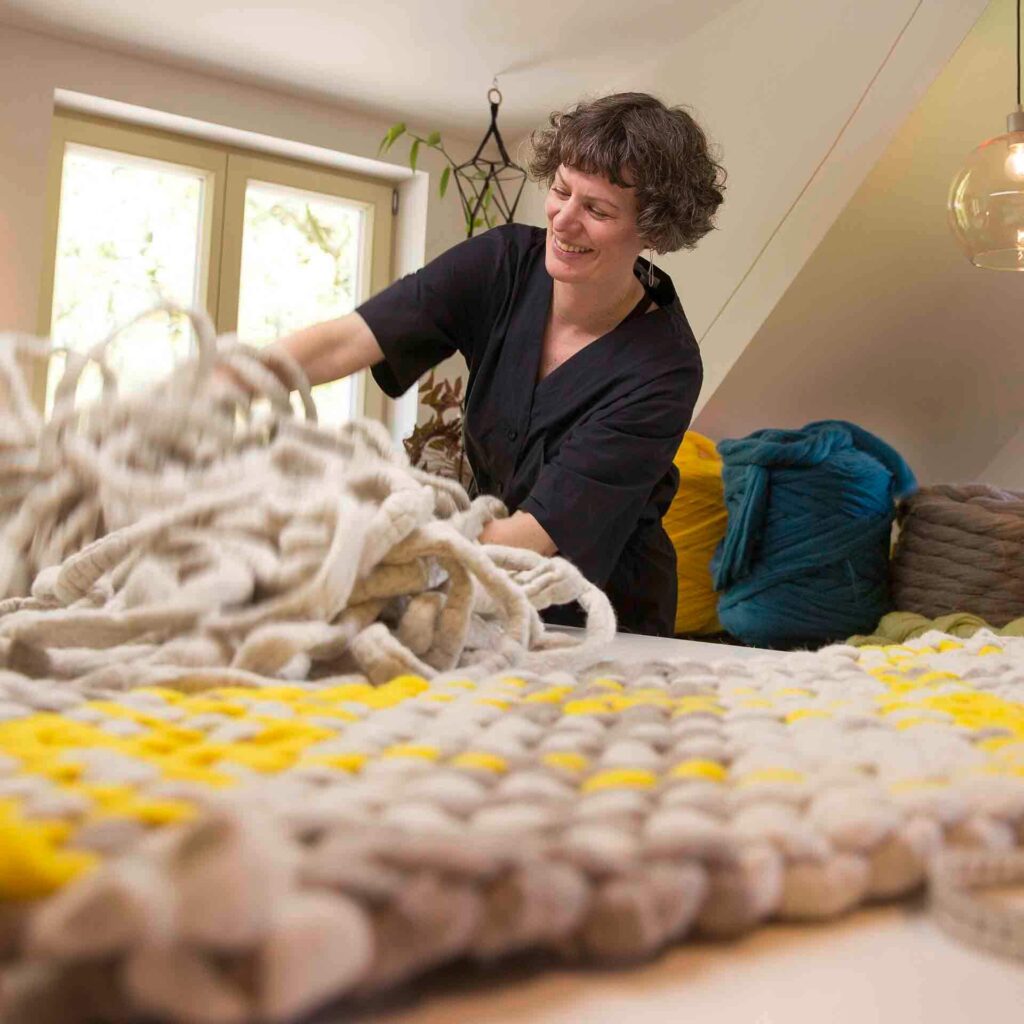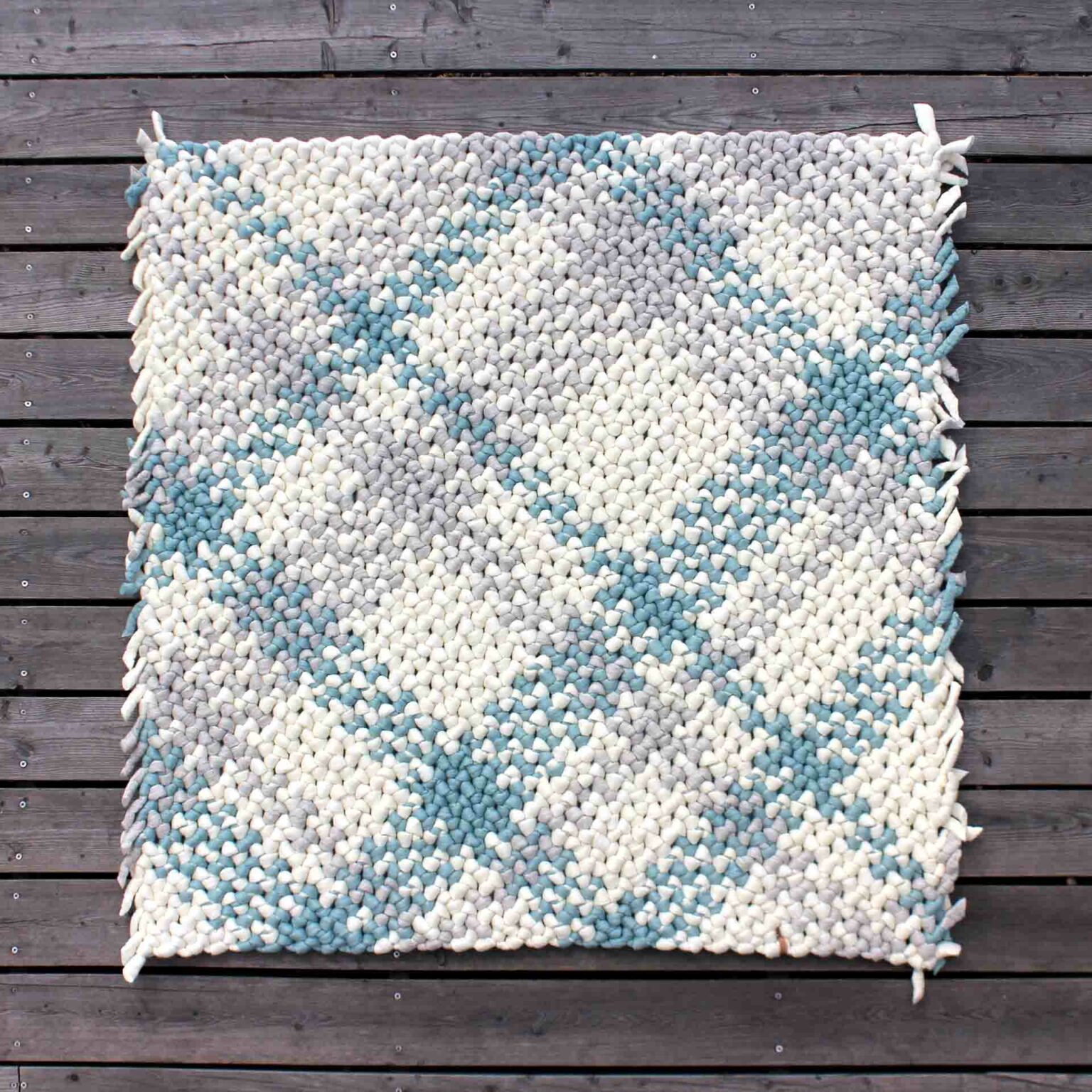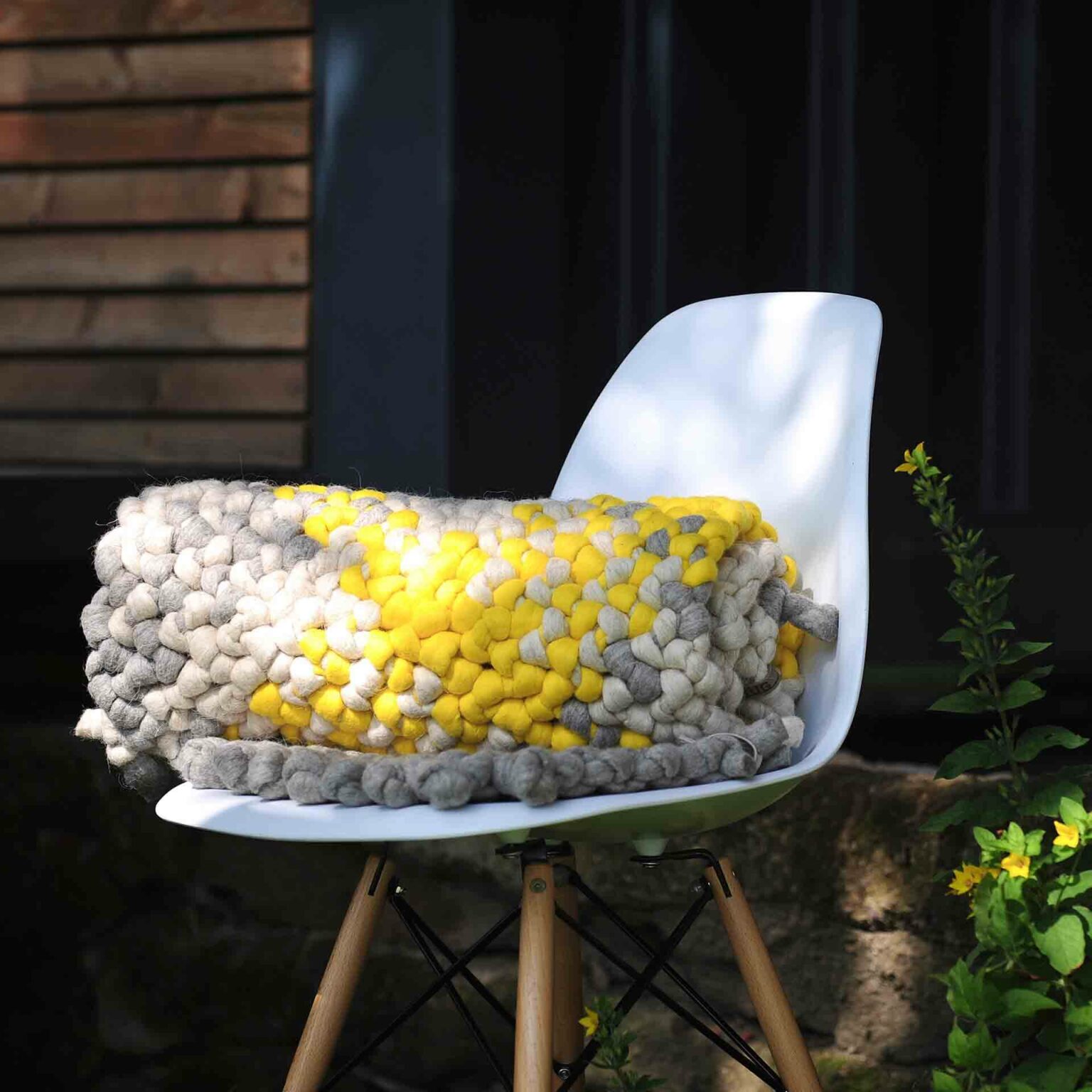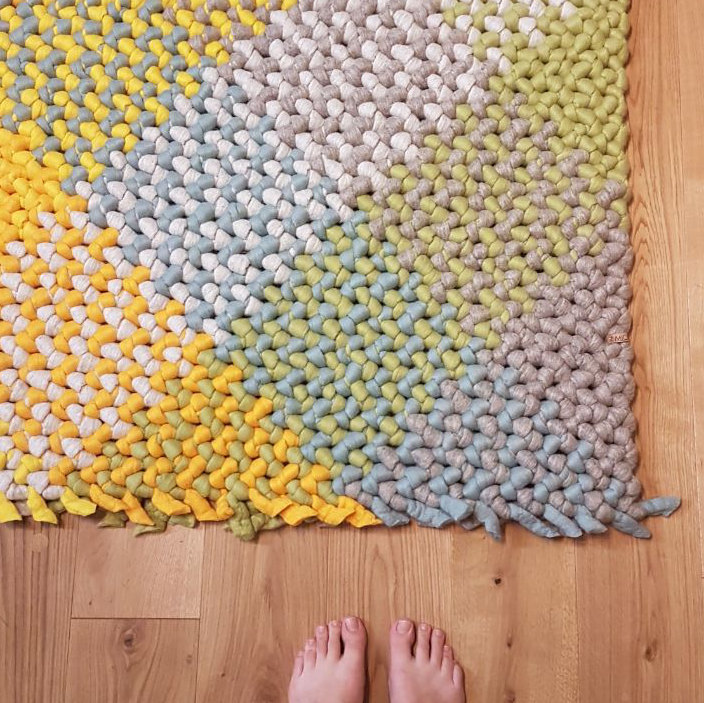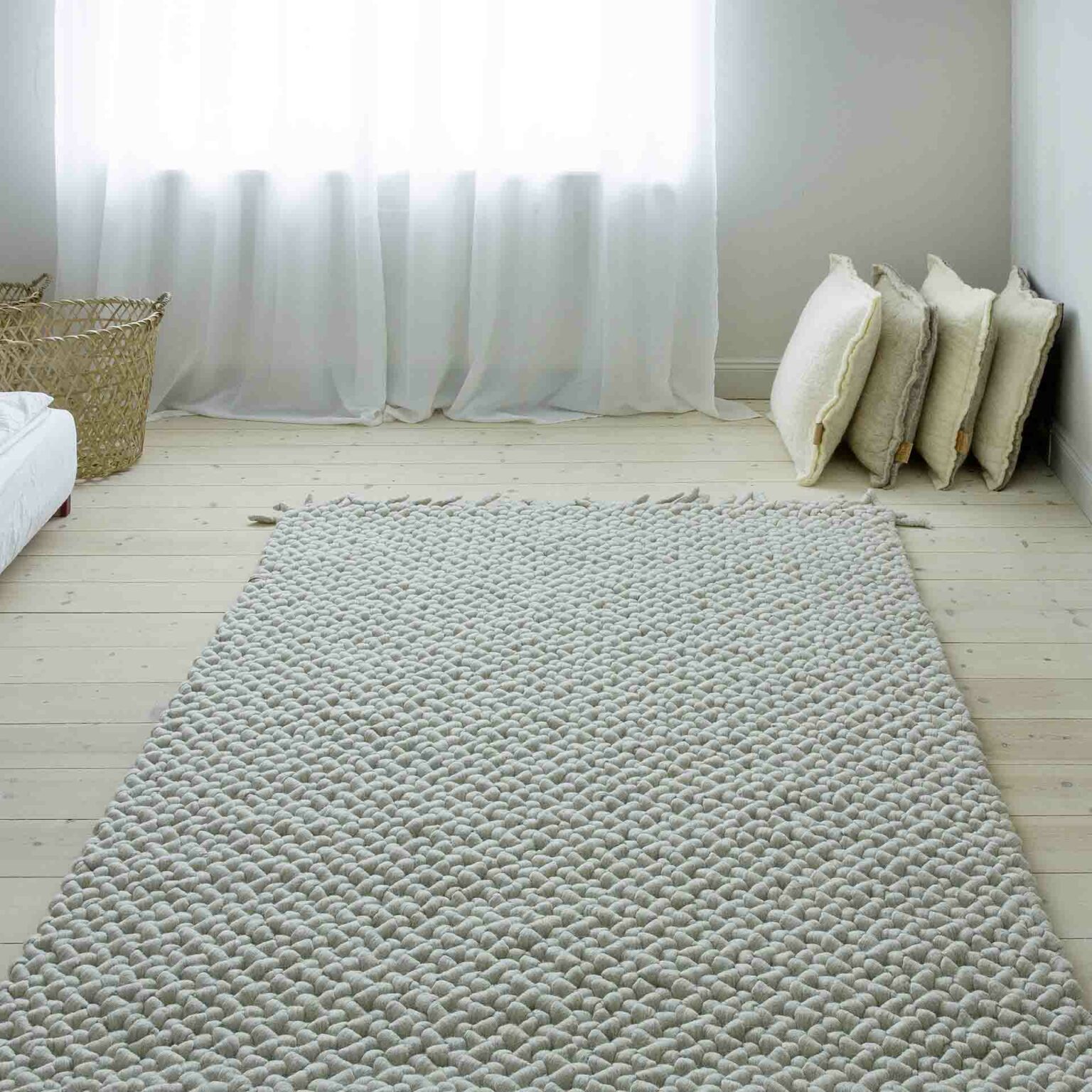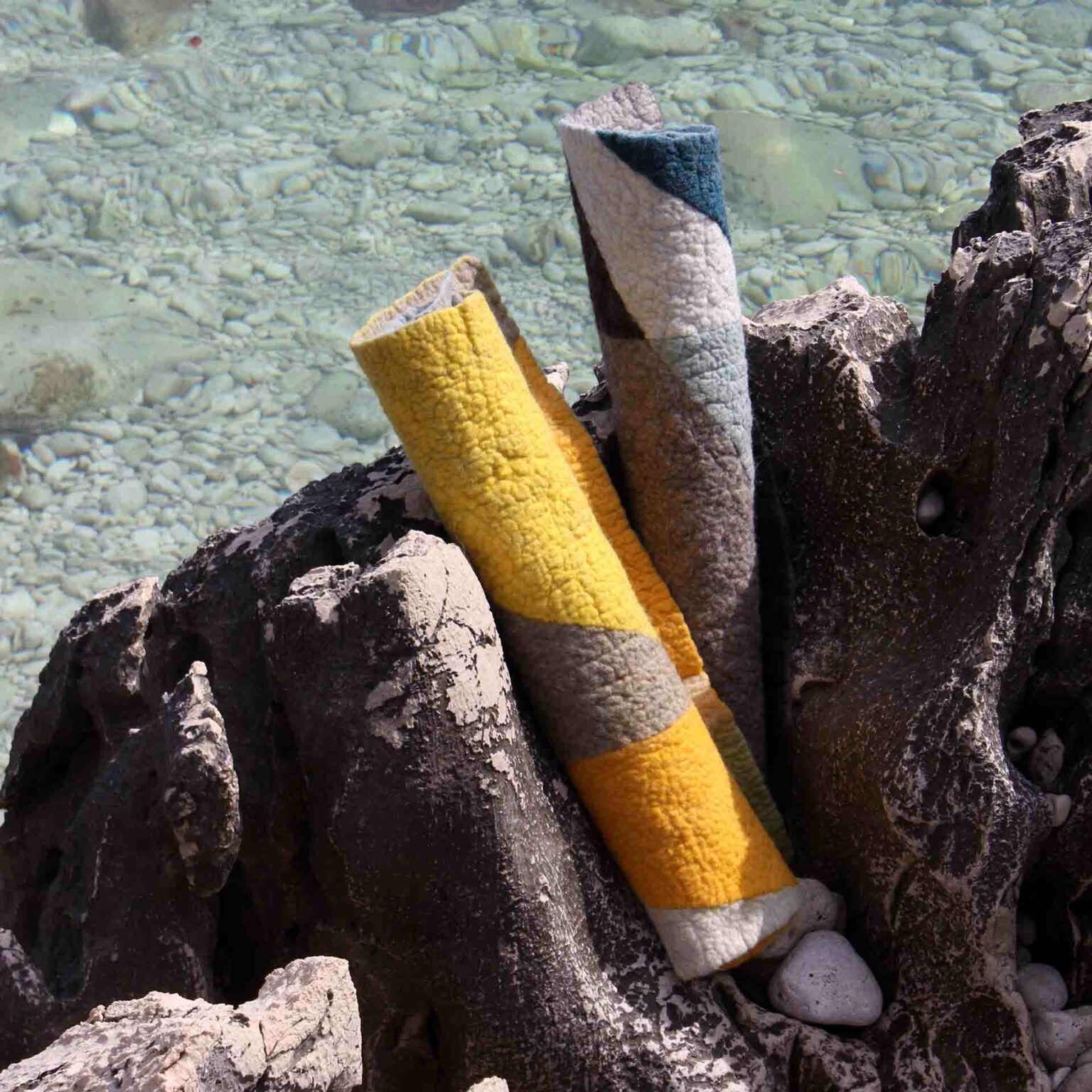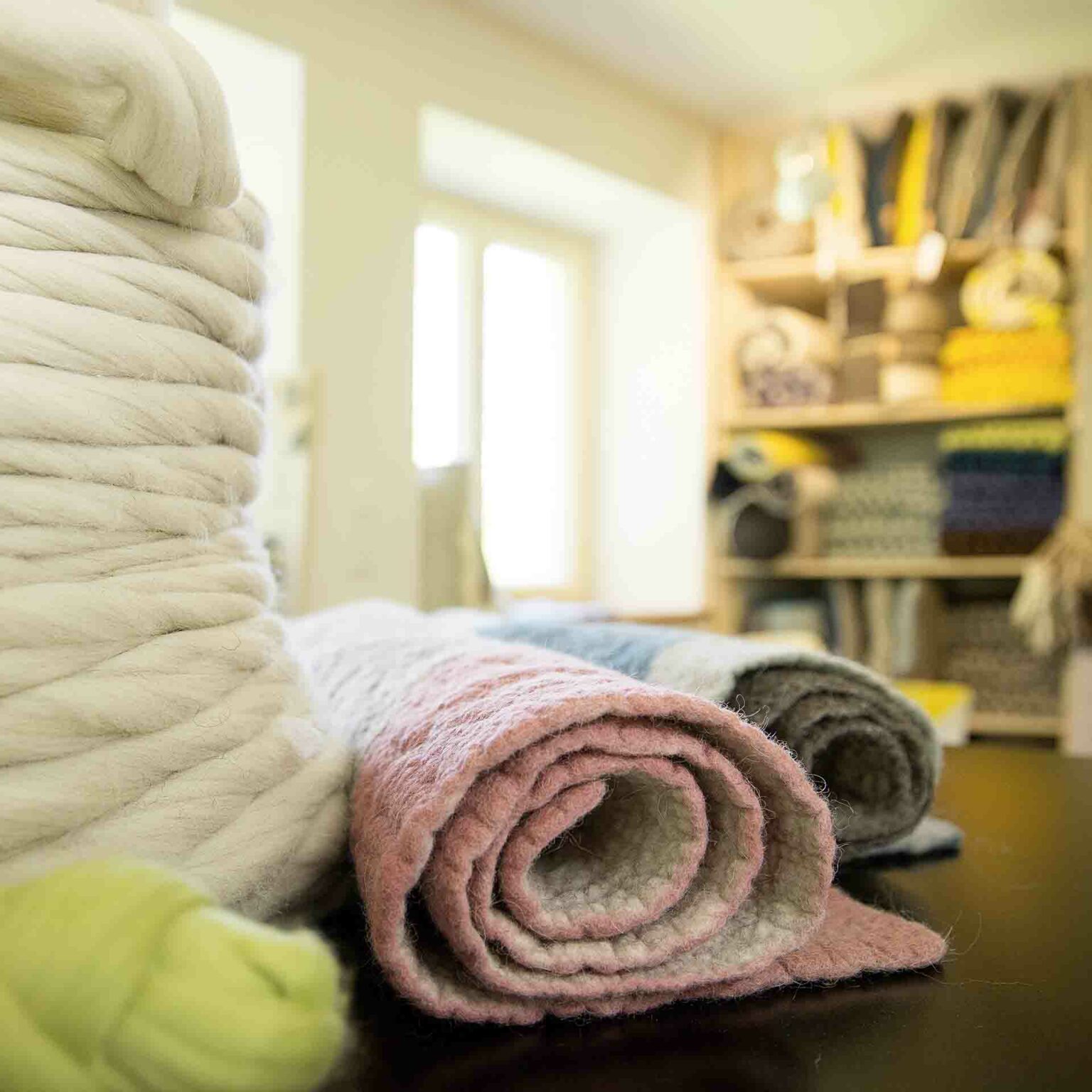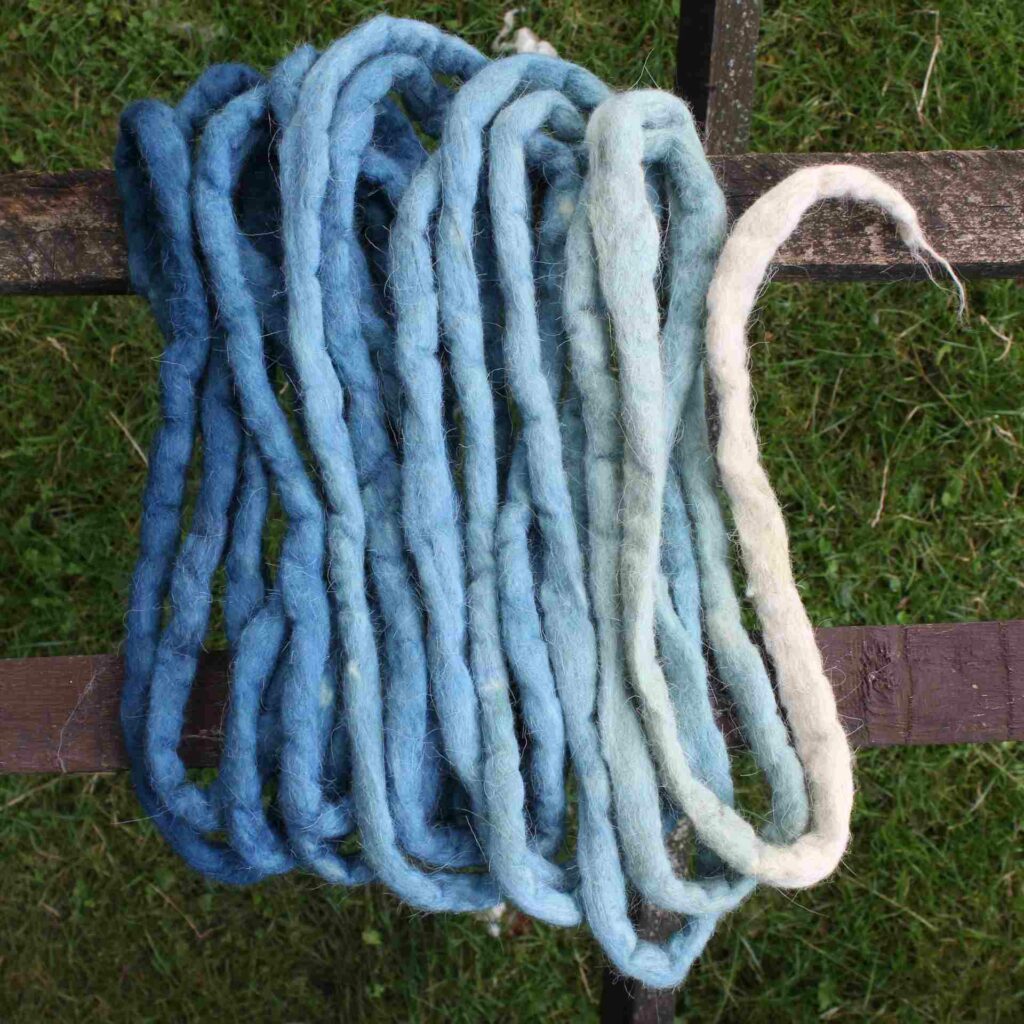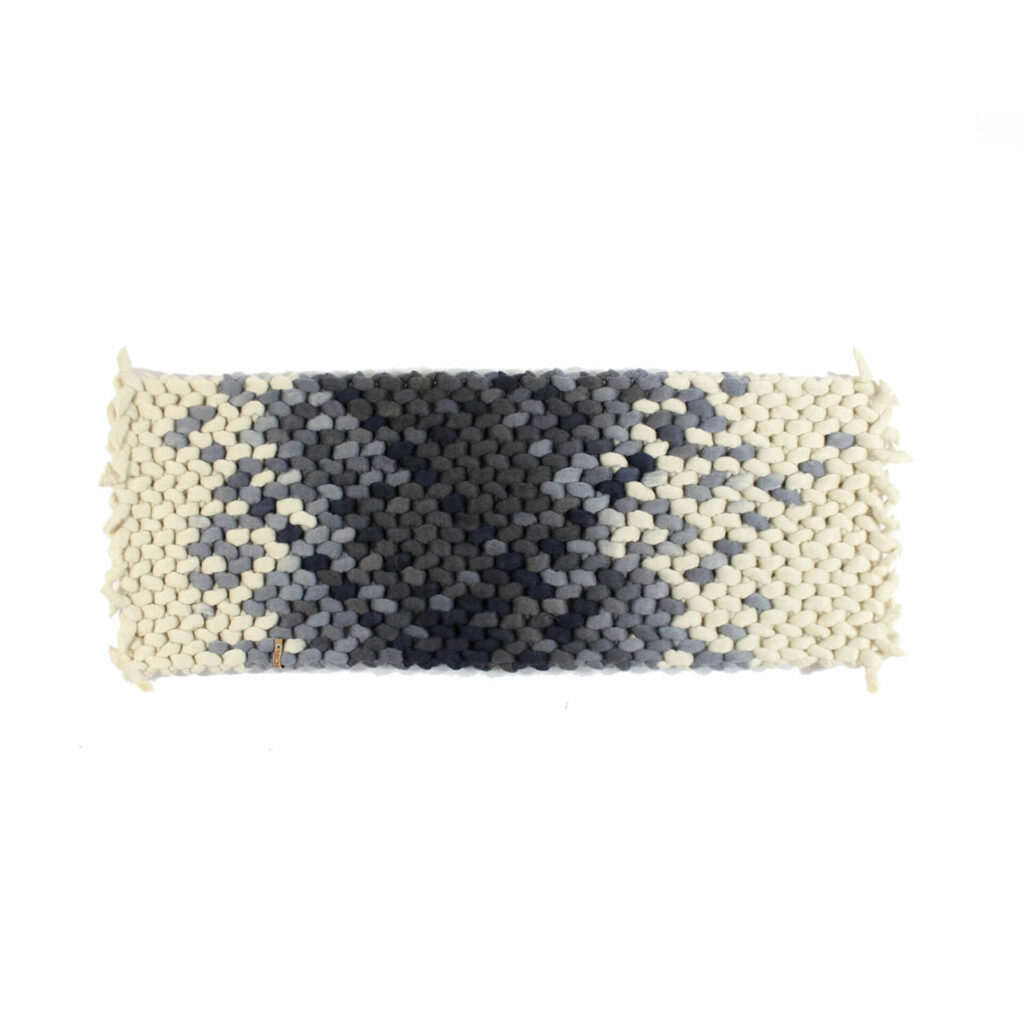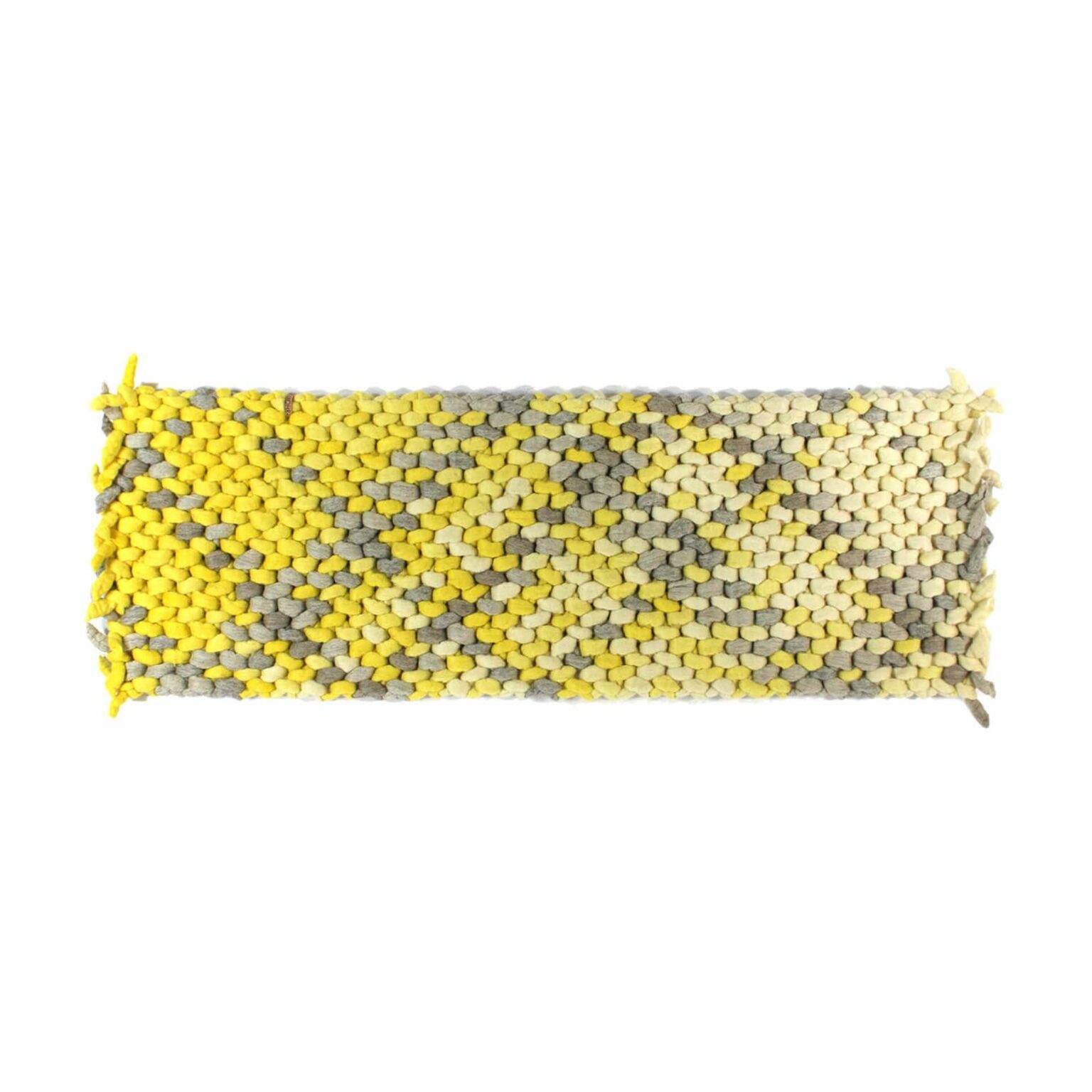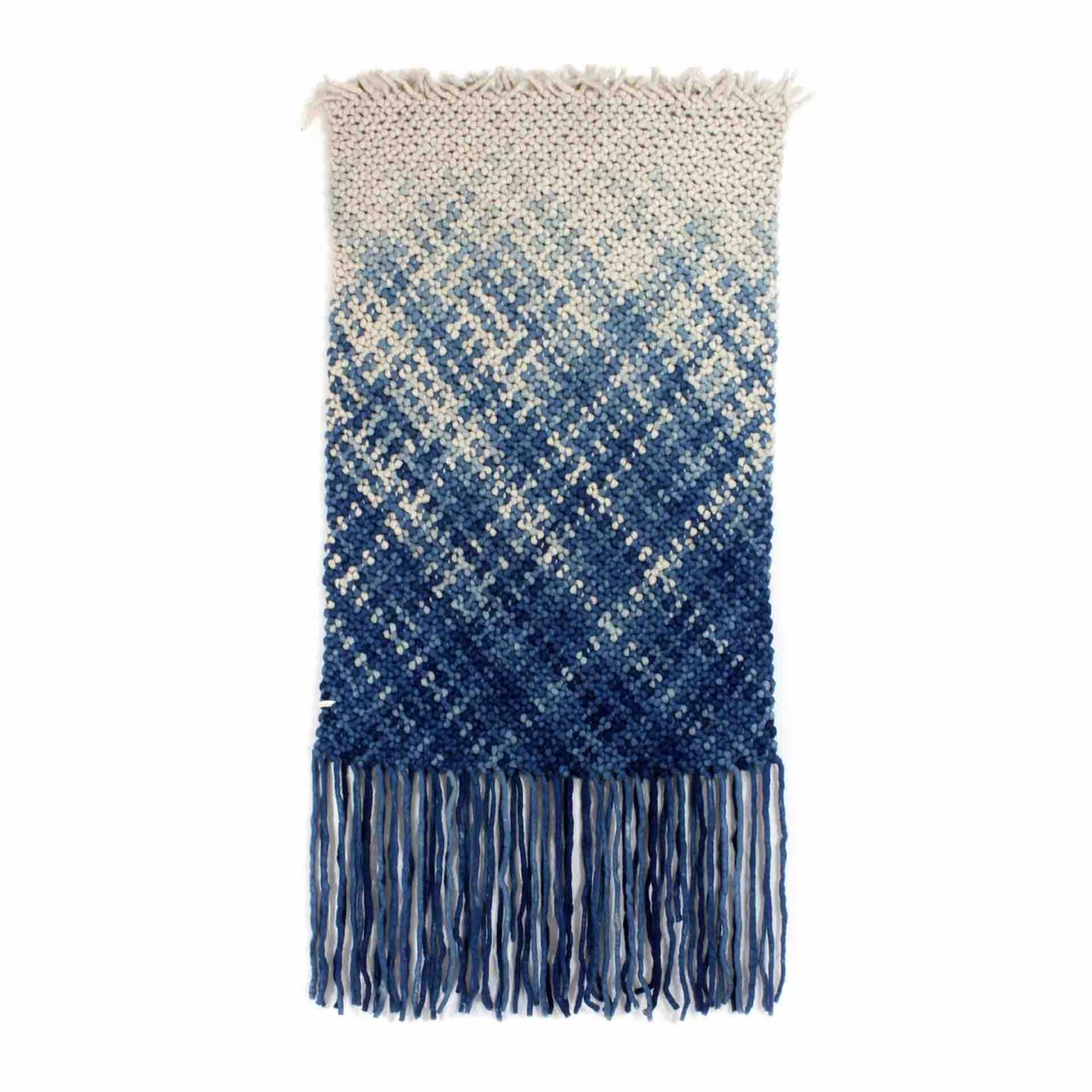Warming sheep's wool - felted and knotted.
Knot by knot to create a unique piece
Michelle Mohr’s rugs are knotted, not woven. They look similar to knitted rugs, but are much firmer, less flexible and therefore very dimensionally stable. This type of production is inspired by macramé and is unique. It also has nothing in common with the knotted carpets associated with the Orient.
The design focuses on the characteristic structure of the moving surface. The interplay with the material creates a unique feel. In addition, this knotting technique can also be used to create patterns that clearly stand out from those of the weaving technique. The result is an interplay between structure and pattern.
Both sides of the rugs can be used as the top side. The sides have two completely different structures and thus create completely different effects.
The felt - as warm as a sheepskin
The special structure of my surface felt invites you to touch and feel. After years of experimentation, I have further developed the classic felting technique to create the unique surface of my products.
Sheep’s wool consists of fine hairs with special properties. Its hollow, air-filled structure ensures excellent heat regulation and temperature equalization. The structure, softness and feltability of the wool vary depending on the breed of sheep. Not all wool is suitable for felting and must therefore be selected carefully.
The individual sheep hairs have fine barbs that interlock with soap, warm water and pressure. Mechanical action – whether by hand or machine – binds these fibers together and forms a dense, firm felt.
I use this technique to make a sturdy felt for my cushions and blankets. The wool is felted by hand with biodegradable soap and in the washing machine, which means that my products are also machine washable.
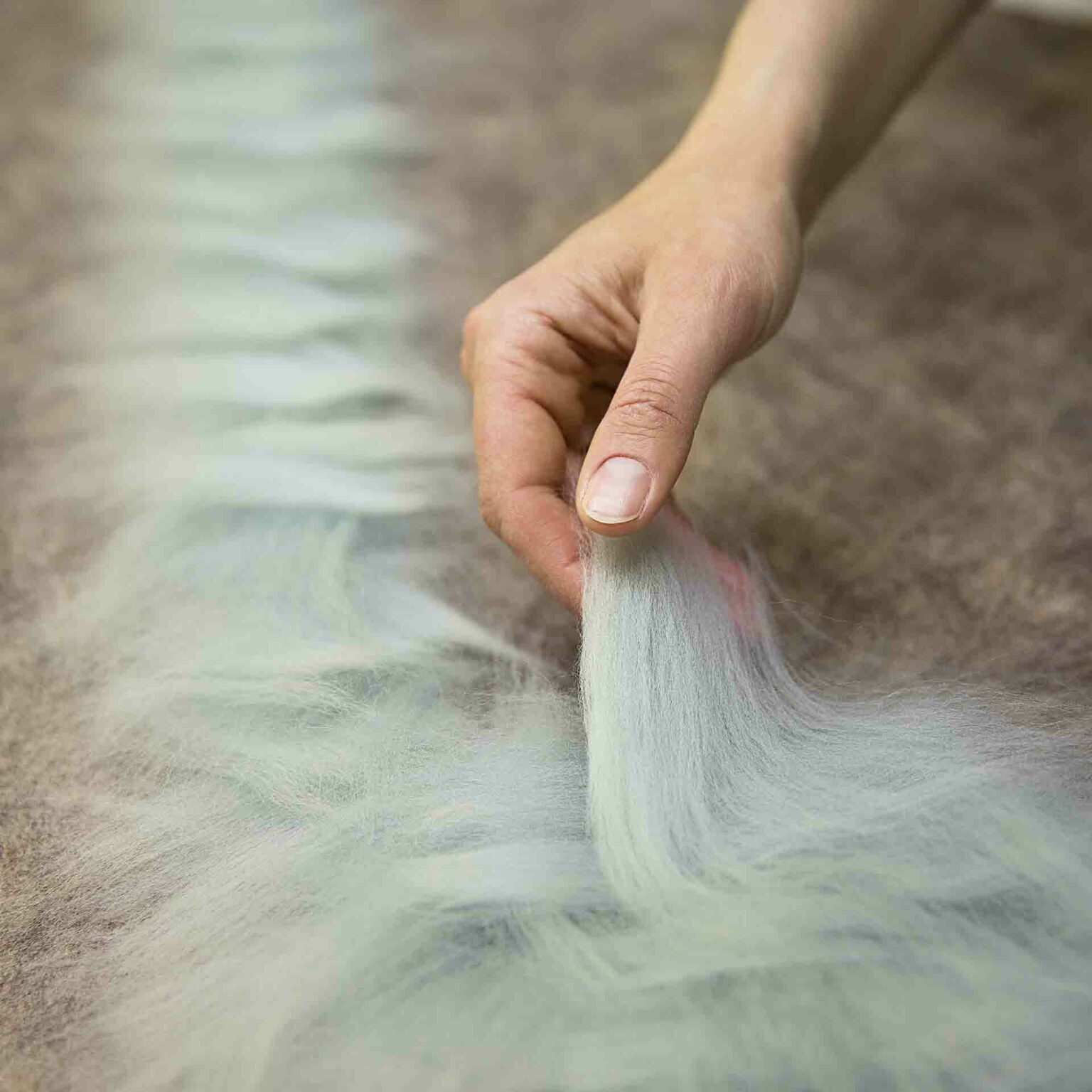
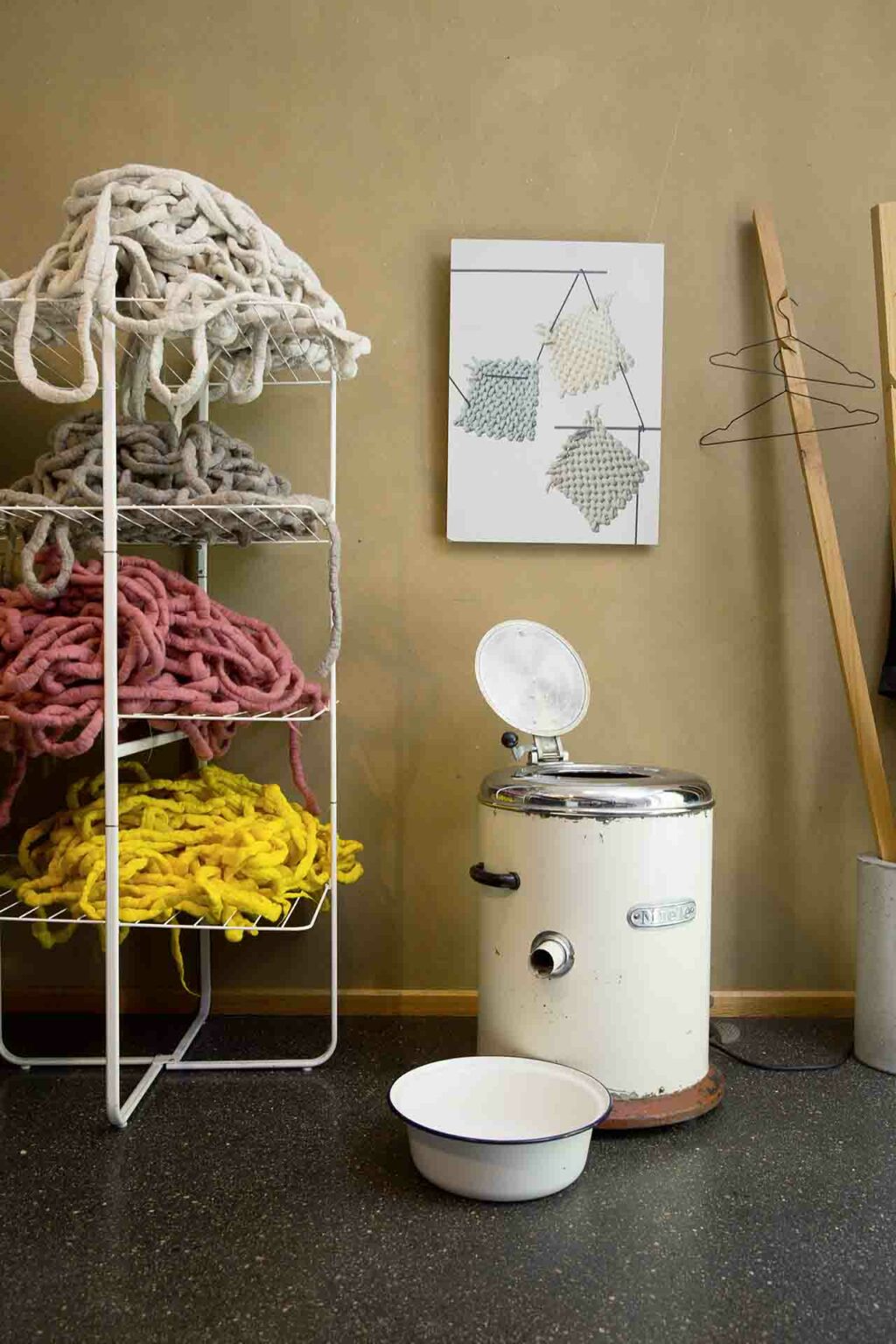
Craft
All my work is created by hand at my work table. I plan patterns and designs on paper and digitally before I start felting and knotting. I made my first rug in 2012 for my diploma thesis – since then I have been perfecting my technique ever since. I learned the basics of felting from Christine Birkle from HutUp in Berlin in 2003, and my enthusiasm for the material continues to this day.
Each rug is unique and is made individually. You can find examples of what your rug could look like in the store or under made-to-measure. You choose your desired colors and the right size. For optimal color selection, you can order my color samples and test them at home.
Whether you need a seat cushion, wall cushion, rug, bench cushion or individual shapes – I will be happy to make the piece you want.



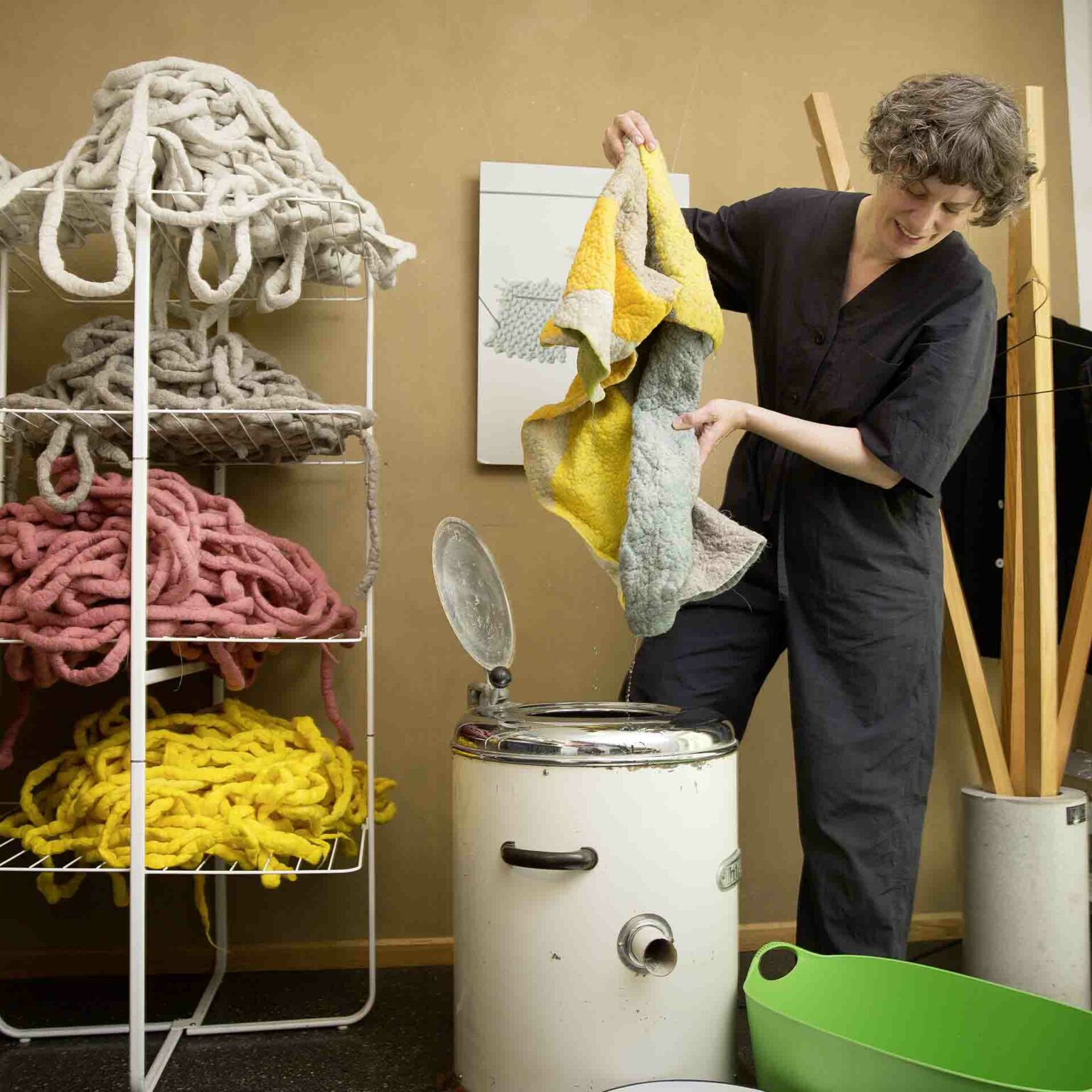
Colors
Many of my works are made from natural, undyed sheep’s wool. The broad spectrum of natural wool colors inspires me again and again. I dye individual pieces in my collection with vegetable dyes or acid dyes at the customer’s request; I buy other wool already dyed.
I particularly like working with indigo, as this natural dye is highly lightfast. The UV resistance of my products is important to me so that my carpets – whether on the wall or on the floor – have a long life.
The colors I use should change as little as possible over the years.
